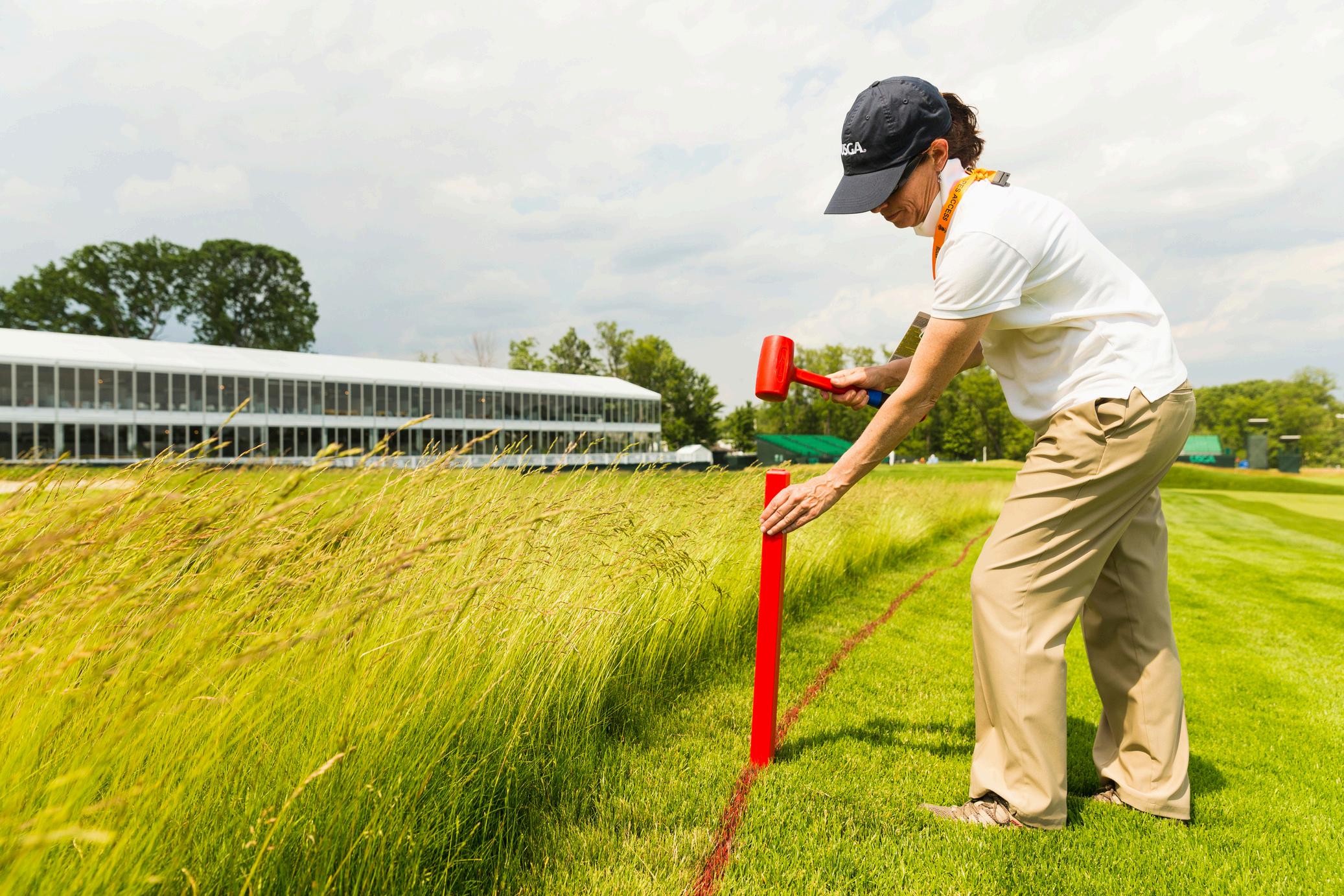

INCLUS
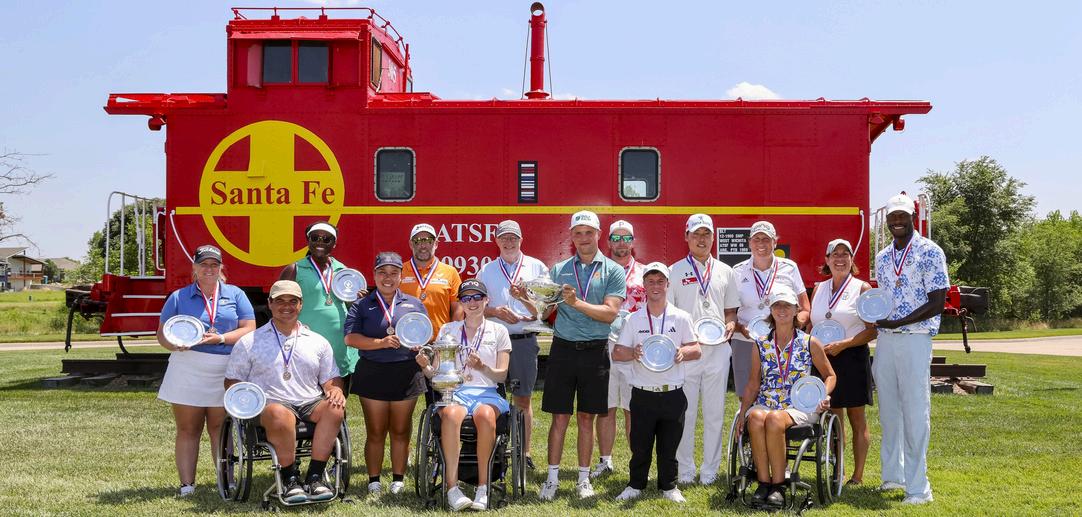





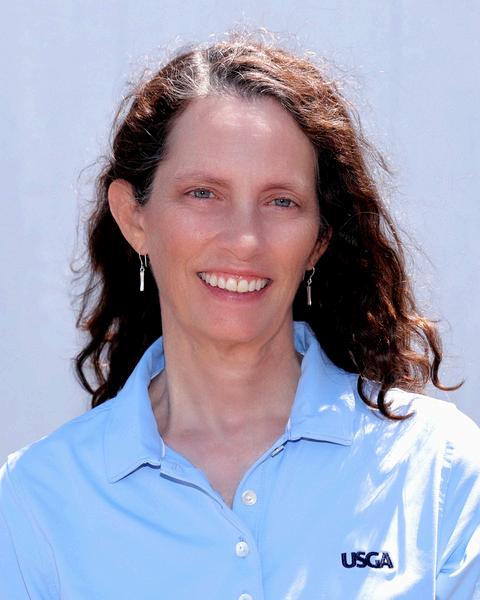

A PRIVATE CLUB PRIMER ON ACCESS AND INCLUSION WHAT IS ADAPTIVE GOLF? INCLUSION INFLUENCERS AN INTERVIEW WITH THE USGA'S STEPHANIE PAREL AND COLTON DEAN U.S. ADAPTIVE OPEN ISSUE
IN THIS ISSUE JULY 2025
A MESSAGE FROM THE ALLIANCE
Executive Director, Dave Barton, PGA
ACCESS + INCLUSION
The Alliance is a leader in access and inclusion - increasing the participation of people with disabilities in the game of golf.
INCLUSION INFLUENCERS
An interview with U.S. Adaptive Open Championship Director Stephanie Parel and Championship Manager Colton Dean
WHAT IS ADAPTIVE GOLF?
A Private Club Primer on Access and Inclusion
ALLIANCE ADVOCACY
The ModGolf podcast with Colin Weston


GAIN SPOTLIGHT
A networking platform and resource center for golfers, adaptive golf leaders, and anyone who believes golf is a game for everyone.
EDUCATION HUB SPOTLIGHT
How do you know your golf course is accessible per the Americans with Disabilities Act?
U.S. ADAPTIVE OPEN CHAMPIONSHIP
4th U.S. Adaptive Open Field Set; Deloitte Expands Support
ALABAMA CHAMPION: ONE-ARMED GOLF PRO ALEX FOURIE
ST. ANDREWS LINKS TRUST LAUNCHES DISABILITY GOLF PROGRAMME
Cover photo courtesy of the USGA




GOLF PATHWAY MIX.

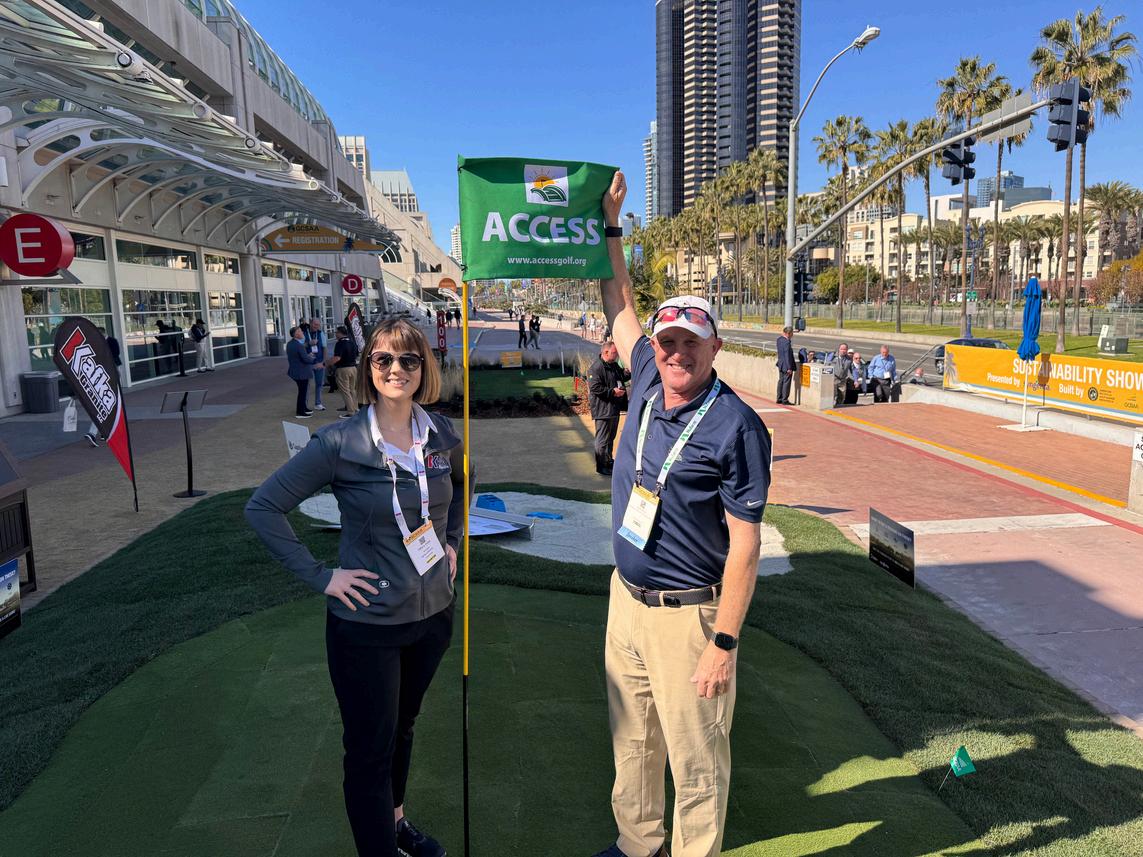
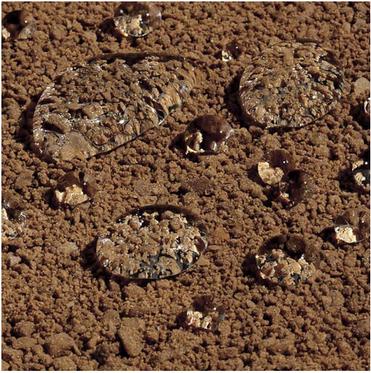
“Kafka’s support of our mission makes it possible for us to deliver education to the golf industry We are proud to be associated with them and the commitment they have to delivering products that improve accessibility to golf facilities around the country!”
Dave Barton, PGA, Executive Director, National Alliance

A MESSAGE FROM THE ALLIANCE

Dave Barton, PGA Executive Director
US Women’s Open Champion - Maja Stark. US Open Champion - J.J. Spaun. US Adaptive Open Champions? We’ll know on July 9th!
For the next two years, Woodmont Country Club will host the Adaptive Open before it heads out to Oregon in 2027. 96 adaptive golfers from around the world ranging in age from 16 - 75 in men’s and women’s categories will battle it out for impairment category bragging rights AND the opportunity to be a USGA National Champion These players all play their way into this event through qualifications around the country with a few exemptions earned from the previous year’s tournament performance or provided by the committee
We hope you enjoy this month’s Inclusion Influencers chat with Stephanie Parel and Colton Dean from the USGA who have been on the front lines of the US Adaptive Open success for several years.
If you are around Rockville, Maryland July 7 -9, 2025, make some time to visit Woodmont Country Club for the 4th US Adaptive Open You won’t regret it
We hope you enjoy this edition. If you have a story to share, just let us know!



ACCESS+INCLUSION
Our mission is to increase the participation of people with disabilities in the game of golf
The National Alliance for Accessible Golf (National Alliance) is the leader in inclusion working to ensure the opportunity for all individuals with disabilities to play and participate in the game of golf Formed in the summer of 2001, the National Alliance is represented by professional associations within the industries of golf, recreation and leisure, and health care providers as well as organizations that advocate for inclusion and provide services to individuals with disabilities

WHATWEDO
Advocacy and Awareness
In addition to advocating for individuals with disabilities in print and online publications as well as social media marketing and interviews, the National Alliance engages in speaking opportunities at conferences and other public events. The Alliance also hosts GAIN, an adaptive golf community networking and engagement forum
Education
The Alliance Education Hub provides guidance to golf course owners and operators seeking ways to make their golf courses and facilities more welcoming, accessible, and inclusive to golfers with disabilities, including programs to bring new golfers into the game.
Resources
The Alliance delivers resources including ADA guidance, policy templates and more to create accessible, inclusive, and welcoming environments.
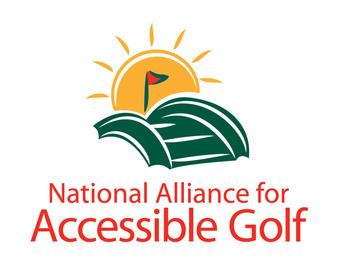
INCLUSIONINFLUENCERS
ANINTERVIEWWITHSTEPHANIEPAREL+COLTONDEAN
Excerpts From Alliance Executive
Director Dave Barton's Interview with U.S. Adaptive Open Championship
Director Stephanie Parel and Championship Manager Colton Dean.
The USGA and Adaptive Golf...
Stephanie: “I always liked sports, so to get to work in sports is a dream I’ve been with the USGA now for over 25 years … we started looking into adaptive golf more closely in 2018. ”
Entry into the golf business...
Colton: “The superintendent there at the golf course I worked at (the university course), suggested I look at this Boatwright Internship with the Georgia State Golf Association. So I did. ”
Course design and accessibility...
Stephanie: “Parkland type courses work really well They don't have all the same amounts of forced carries as some other designs which are very difficult to negotiate for a lot of adaptive players, especially over and over again on a target type course … and with that, I find myself gravitating towards older courses because they didn't move as much earth, and sometimes even municipals ”
What about the spectators...
Colton: “Joan Stein and Stein Consulting does the same stuff for our Open Championships, so I can't wait to catch up with her and get a feel for the week she had at Oakmont She does a great job as you know. ”

“We're still definitely in development and look at almost every aspect every year, once the championship concludes, and see how we can improve or make changes that better align with the adaptive golf community or or Paralympic standards ”

Continuous learning...
Stephanie: “We'll be evaluating this championship every year as it evolves It's just so different from everything else we do There's not really a model of ours to pull from We’re really grateful to our allied golf associations that work with the USGA who are state and regional golf associations to help deliver those qualifiers. ”
Qualifying sites...
Colton: “Where we have the qualifying sites...we kind of base it a lot on where the entries are coming from a little bit and try to touch every corner of the US…travel can sometimes be a little bit different for different players So we try to get them in areas that make sense for what we're seeing ”
Stephanie Parel and Colton Dean
The WR4GD...
Stephanie: “WR4GD stands for World Ranking for Golfers with Disability which is now a hundred percent under the world amateur golf ranking umbrella and USGA R&A governance … it kind of has a twofold purpose. The first one is the rankings, so as it is right there in the name, but second of all to be considered for the ranking, you have to have a WR4GD Pass and that is done via medical assessors ”
Adaptive golf is a big family...
Colton: “It's so cool to get messages from players and to your point about being a family I've gotten so many already like, ‘Can't wait to see everybody again ’ It does feel like a big reunion once everybody's on site, so that's always fun but, like you said, definitely a competition once you start teeing the ball up and scores start to count. ”
Constantly evolving...
Colton: “It’s a brand new championship, the newest USGA championship. We're still definitely in development and look at almost every aspect every year, once the championship concludes, and see how we can improve or make changes that better align with the adaptive golf community or Paralympic standards ”
Adaptive car availability...
Colton: “ ... but just finding a seated cart … the access to them seems to be a pretty consistent barrier for participation ”
Resources...
Colton: “Obviously, you know the great work that you <the Alliance> has done over the past few years and creating a database online to know where these <adaptive> carts are You can search by state That's obviously a great resource ”
Filling the gap between learning and competing...
Colton: “There's this gap and there's like a jump from, ‘all right, I'm a regular clinic participant and then I'm now supposed to go play in the Georgia adaptive open?’ That probably needs more development in the adaptive golf space…more of a linear path in the non adaptive space …to the GSGA’s credit, last year they added a two day event for more of your higher index beginner…along with their clinics and they started doing more play days where they could kind of get out on the course ”
Growth of the game...
Stephanie: “Only Colton, when he was at the Georgia State Golf Association, had an AGA adaptive event and now there's been at least a dozen started since the inaugural adaptive open, which is really exciting for us. ”
Biggest takeaway from your experiences...
Stephanie: “I think what everybody finds about adaptive golf once they're around it is it’s just contagious, it's addictive, and it kind of ruins you for other kinds of golf.You just want to be there more and more, and do what you can to have any part in it it goes beyond golf It’s about inclusion and human dignity ”
Colton: “What got me hooked on adaptive golf was just seeing some of the transformations that it made in people's lives and knowing that effect can happen through golf was awesome and to kind of merge what I love to do, which is running competitions and that aspect of golf ”
USGA Partner support...
Stephanie: “The USGA made a very exciting announcement for us that Deloitte is going to support the adaptive open in a couple of different ways They're one of our corporate partners and we couldn't be more pleased that one of those is that every player who competes in the championship is going to be eligible to get up to $3,000 worth of reimbursements for travel expenses. Golf is expensive, it's even more expensive for adaptive players, and we just think that's a great development super excited about it ”
Colton: “Continuing on that point from the support side of Deloitte, for the 1st time we're going to have live coverage of the final round for the Adaptive Open this year on the Golf Channel. So that's going to be really cool just as we continue to showcase these players and having it in the final round is just going to be really, really cool ”

WHAT IS ACCESSIBLE GOLF?
A PRIVATE CLUB PRIMER ON ACCESS AND INCLUSION
By Dave Barton, PGA and Jan Bel Jan, ASGCA
This article is reprinted from a previous edition of Club Director Magazine with permission from the National Club Association (NCA) We are appreciative of the NCA’s support of our mission including NCA President and CEO Joe Trauger’s participation as an Alliance Board Member. Woodmont Country Club in Rockville, Maryland will be the first private club to host the US Adaptive Open and the following article provides a foundation for private clubs across the country to better understand how they can prepare to welcome golfers with disabilities
Imagine Cheryl’s surprise when she invited her best friend Emily from college to visit and play golf at a prestigious private club she joined Upon arrival at the course, the friends realized some unanticipated challenges while trying to access areas of the golf club and the golf course
Emily entered the Army after college and while bravely serving in the Middle East, was paralyzed from the waist down due to an improvised explosive device She uses a wheelchair to get around. Emily was a standout athlete in a range of sports growing up, through high school and into college She had never played golf until years after her military career ended, when fellow veterans steered her toward a program designed to help veterans learn the game
Depression and a feeling of isolation set in soon after her injury Even though she was surrounded by family and friends, Emily became more and more withdrawn from society. This is not uncommon under these circumstances. Fortunately, Emily’s friends introduced her to the veteran’s golf program and convinced her to try it This program was designed to teach golf, but as importantly, provide physical and emotional therapeutic value proven to ward off and manage depression, post-traumatic stress disorder (PTSD) and suicidal thoughts experienced by wounded veterans
Emily has been playing golf for eight years now, is happy at home and at work, has a great family, and oh by the way, carries a USGA Handicap of 7.6 while using a single rider golf cart. The time on the golf course with her husband and children goes way beyond quality time. Single rider golf carts, such as the SoloRider and the VertaCat, are adaptive golf

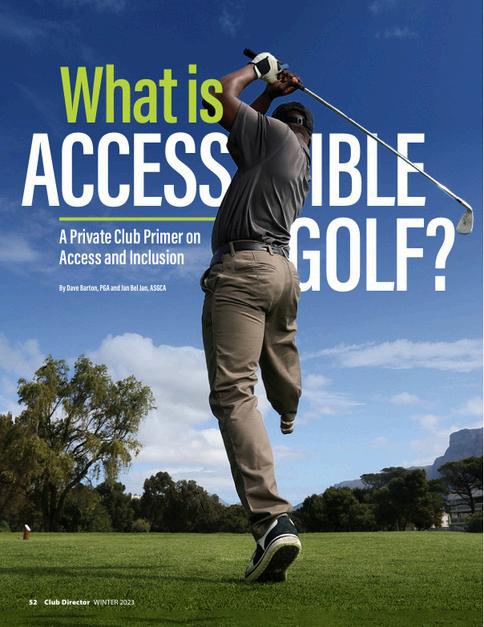
vehicles specifically designed to maneuver around the golf course, into and out of most hazards, with wheel bases and size that, despite what many believe, do not damage the greens or the course when used properly Emily’s single rider cart not only carries her golf bag, but also lifts her from a seated position, supports her in a standing position, and allows her to have a free swing at the golf ball.
Emily is included in regular golf games at a local publicly available golf course in her hometown and she enjoys a brief stop at the 19th hole after the round. If
you ask her what she thinks about her time on the course and her inclusion into the social fabric of the game, she will tell you, “Golf saved my life. ”
She can now go almost everywhere on the golf course a walking golfer can go. Almost.
“ As the population continues to age, today’s avid golfers and private club members may become golfers with disabilities who desire to keep playing the game they love. “
It’s easy for Emily to get around on the course she plays because it is a public golf course, so it falls under the statutory requirements to provide “access” to the facility and the golf course under the Americans with Disabilities Act (ADA), now in its 33rd year In this example, the golf course Emily normally plays is in compliance with the ADA However, many public golf courses are still working toward ADA compliance and the laws are clear as to how public courses must comply. The application of the ADA may be different on the private side
Indeed, when it comes to the ADA and accessibility, not all private clubs are alike Many will fall under the requirements of the ADA based on where and how often non-members are permitted to use the club for reasons that would be considered public access to the facility or a specific part of the facility
Where does a golf club find the answers for what they may or may not have to do regarding “access” and the ADA? Where can they start if they just want to be more accessible for players? It is best to start with a clear understanding of the requirements relative to the type of golf facility we are talking about: private or public
Access and Inclusion
Before we go into laws, let’s clarify what “access” and “inclusion” mean.
Access/accessibility, from a golf club perspective, relates to the architectural design and physical layout of a golf facility’s building structures (clubhouse, oncourse facilities, etc ) along with the golf course itself and the potential of people with disabilities to freely, and without restrictions or impediments (barriers), navigate and use the facilities The better the access, the more welcoming the environment
Inclusion is a byproduct of access and a welcoming environment It occurs when golfers with disabilities
are included in activities in which non-disabled individuals may easily participate and are invited to do so. They are welcomed as any other individual would be to the positive social experiences with friends and family that the game of golf so beneficially provides
It is illegal to discriminate against a person with a disability Beyond that, many golf course owners and operators have recognized that golfers with disabilities represent a growing market. Additionally, as the population continues to age, today’s avid golfers and private club members may become golfers with disabilities who desire to keep playing the game they love.
“ A club may lose its exemption on a temporary basis; for example, if an organization holds a charitable fundraiser that opens its facility and sells foods and beverages to the general public for one evening every five years, it may only be subject to Title III for the purposes of that specific event.”
Now, the Law: The Americans with Disabilities Act (ADA)
The Americans with Disabilities Act (ADA) was signed into law on July 26, 1990, by President George H.W. Bush The ADA is one of America’s most comprehensive pieces of civil rights legislation that prohibits discrimination and guarantees that people with disabilities have the same opportunities as everyone else to participate in the mainstream of American life to enjoy employment opportunities, to purchase goods and services, and to participate in State and local government programs and services
Modeled after the Civil Rights Act of 1964, which prohibits discrimination on the basis of race, color, religion, sex, or national origin and Section 504 of the Rehabilitation Act of 1973 the ADA is an ‘equal opportunity’ law for people with disabilities
Outlined within the ADA are specific compliance differences between private and public properties Title III of the ADA requires public accommodations, including golf courses, to provide goods and services to people with disabilities on an equal basis with the general public In addition, Title II of the ADA requires public entities, such as states and local governments, to make golf courses and other facilities accessible to, and usable by people with disabilities
Sounds like an issue for public golf courses, right? Not necessarily if a private club meets the standard of a “public accommodation” through usage patterns and
practices that seem to exceed or deviate from the member-only standard
Per the ADA, “The broad range of Title III obligations relating to ‘places of public accommodation’ must be met by entities that the Department of Justice regulation labels as ‘public accommodations. ’ In order to be considered a public accommodation with Title III obligations, an entity must be private and it must own, lease, lease to, or operate a place of public accommodation defined as a facility whose operations, affect commerce and fall within at least one of the following 12 categories:
1. Places of lodging (e.g., inns, hotels, motels) (except for owner-occupied establishments renting fewer than six rooms)
2. Establishments serving food or drink (e.g., restaurants and bars)
3 Places of exhibition or entertainment (e g , motion picture houses, theaters, concert halls, stadiums).
4. Places of public gathering (e.g., auditoriums, convention centers, lecture halls)
5 Sales or rental establishments (e g , bakeries, grocery stores, hardware stores, shopping centers).
6 Service establishments (e g , laundromats, dry cleaners, banks, barber shops, beauty shops, travel services, shoe repair services, funeral parlors, gas stations, offices of accountants or lawyers, pharmacies, insurance offices, professional offices of health care providers, hospitals).
7 Public transportation terminals, depots, or stations (not including facilities relating to air transportation).
8. Places of public display or collection (e.g., museums, libraries, galleries)
9 Places of recreation (e g , parks, zoos, amusement parks).
10. Places of education (e.g., nursery schools, elementary, secondary, undergraduate, or postgraduate private schools)
11. Social service center establishments (e.g., day care centers, senior citizen centers, homeless shelters, food banks, adoption agencies)
12. Places of exercise or recreation (e.g., gymnasiums, health spas, bowling alleys, golf courses) ”
Items 1, 2 and 12 above are brought to your attention as the above criteria simply tells us a private golf club (the buildings and the golf course) could be labeled as a public accommodation.
When does this occur? Per ADA Great Lakes, “ one of 10 regional centers within the ADA National Network funded by the National Institute on Disability, Independent Living, Rehabilitation and Research (NIDILRR), a division of the Administration for the
Community Living (ACL), and the Department of Health and Human Services (HHS)”, Title III compliance requirements for a private club could come into play in situations as outlined below.
When is a Private Club Covered under Title III?
Many organizations that meet the criteria of a private membership club may hold events that are open to the general public Clubs may hold such events to promote their views, raise funds for a charitable cause or recruit potential members.
A club may lose its exemption on a temporary basis; for example, if an organization holds a charitable fundraiser that opens its facility and sells foods and beverages to the general public for one evening every five years, it may only be subject to Title III for the purposes of that specific event
The nature and frequency of such activities, however, may affect the organization’s status as a private club. The Department of Justice provides this example: If a fraternity hosts one event a year that is open to the public, a temporary ramp may be sufficient to make the area accessible But if the fraternity hosts several such events during a year, it may be obligated to construct a permanent ramp.
What if a Private Club Rents Space to a Public Accommodation?
The private club would lose its exemption but only in relation to the place of public accommodation For example, if the club rents space to a private day care center that is open to the general public, the club would likely need to comply with Title III as the daycare center’s landlord. The club’s obligations might include things like improving structural access in existing spaces used by the day care center
Additional laws and governance that could apply to private clubs include (quoted from the ADA National Network):
Federal Funding and the Rehabilitation Act. Section 504 of the Rehabilitation Act applies to any agency, organization or business that receives federal funding. The provisions of Section 504 are essentially the same as those of the ADA, so federal funding recipients, even if they are exempt from the ADA, are subject to the full range of requirements that address disabilitybased discrimination. Such organizations must ensure access to goods and services, make reasonable policy modifications, and communicate effectively with individuals who have vision, hearing or speech disabilities
Facility Access and Building Codes State and local building codes usually apply to all types of buildings, including many types not covered by the ADA Building codes typically include accessibility requirements, which are often similar to those found in the ADA Standards for Accessible Design but are not necessarily exactly the same Some state or local building codes have accessibility requirements that are greater or more specific than those found in the ADA. The application of building codes is commonly triggered by new construction and certain types of alterations. Some code requirements may be triggered by other activities, such as changing the use of a building from one type to another (for example, converting an old factory into a private membership club’s meeting space). It is important for those undertaking construction, alterations, or facility management to check into all requirements that may apply to their activities, including state and local codes, licensing requirements, or other federal laws Where laws or codes overlap, the most stringent provisions those that are the strictest or require the greatest level of access must be applied. ”

As a private club, understanding if you do or do not meet the standard as a “public accommodation” would establish, what, when and if any actions would need to be taken related to the buildings and golf course, or courses, that are part of the private club Those requirements are:
“New golf course facilities must be accessible in accordance with the ADA. The ADA also requires removal of architectural barriers in existing facilities when ‘readily achievable’ which will be explained below For courses owned or operated by a state or local government, access must be provided when doing so is necessary to make the ‘program’ of golf accessible
A privately owned golf course, whether for profit or nonprofit, that is open to the public, is subject to Title III of the Americans with Disabilities Act. The Title III requirements for existing courses are that courses shall make changes to the course or a facility when to do so is ‘readily achievable. ’”
Readily achievable applies to the removal of barriers that would prevent public access by individuals with disabilities.
Additionally, per the ADA, “Readily achievable means easily accomplishable and able to be carried out without much difficulty or expense In determining whether an action is readily achievable factors to be considered include:
1 The nature and cost of the action needed under this part.
2.The overall financial resources of the site or sites involved in the action; the number of persons employed at the site; the effect on expenses and resources; legitimate safety requirements that are necessary for safe operation, including crime prevention measures; or the impact otherwise of the action upon the operation of the site.
3.The geographic separateness, and the administrative or fiscal relationship of the site or sites in question to any parent corporation or entity.
4.If applicable, the overall financial resources of any parent corporation or entity; the overall size of the parent corporation or entity with respect to the number of its employees; the number, type, and location of its facilities
5 If applicable, the type of operation or operations of any parent corporation or entity, including the composition, structure, and functions of the workforce of the parent corporation or entity ”
Requirements or Recommendations?
Where does a private club start? How do you budget for this? It first comes down to one question: Is the club exempt or not?
To answer this, a club should evaluate the extent and manner to which it functions as a public-serving entity. Does it cross a line that leaves it potentially nonexempt from ADA compliance? Are events rare, isolated instances, or do they occur with regularity, year-round, such as hosting a lot of golf tournaments/fundraisers where the public may play, or renting space on a regular basis for banquets, weddings or events? A member of a private club bringing a guest to play golf is not an action that qualifies a course as a public accommodation
A better question to ask may be, if the guest is disabled, will access to the club facilities and golf
course ensure the member and the guest have a mutually beneficial and positive experience?
The outcome of the above analysis will drive requirements versus recommendations along with associated costs and timelines related to efforts by the club to move toward a more accessible and inclusive environment.
The benefits of accessibility and inclusion are well known:
Members age and require accommodations to continue to play the game they have loved for so many years
Accidents unfortunately happen, whether those involved are young or old.
The membership quite possibly has friends or associates who require accommodations due to a disability
The club may want to seek a new revenue line via public rental of space or the golf course for events, fundraisers, etc
The public relations benefits of being accessible and inclusive are a given, even if that’s a simple matter of supporting a public organization’s efforts on a small scale
Private clubs and memberships vary demographically and financially, but disabilities have no prejudices regarding whom they choose. All demographics qualify and no person can avoid what a disability may mean for how they live their life
Taking First Steps
A great place to start is with the following two resources. Both documents have distilled the ADA into easily interpretable points further elucidated by illustrations and explanations:
“ADA Checklist for Existing Facilities Golf Courses” developed by the Institute for Human Centered Design and the ADA National Network. “Accessible Golf Courses A Summary of Accessible Guidelines ”
Here are a few ADA compliance points provided from the checklist mentioned above:
Is there an accessible route to the entrance of the golf facility?
If there are two teeing grounds for a hole: Can a golf cart enter and exit the forward teeing ground, unless it is not possible due to terrain?
If a golf car cannot enter and exit the forward teeing ground, can it enter and exit the other teeing ground?
If a curb or other barrier on the golf cart passage prevents golf cars from entering a fairway, is there an opening at least 60 inches wide at intervals no more than 75 yards apart for golf cart passages?
If a golf cart passage is provided instead of an accessible route, is the clear width of the passage at least 48 inches?
“ Private clubs and memberships vary demographically and financially, but disabilities have no prejudices regarding whom they choose.”
Golf has proven therapeutic benefits to individuals with a range of disabilities, notwithstanding the potential economic benefits of encouraging and welcoming a large population to the sport Per a 2018 NGF study:
Approximately 14 million individuals with disabilities are interested in golf 6 million report they had played in the past but no longer do
More than 600,000 golfers with disabilities are currently engaged in golf.
As a closing question, if an individual who is interested in membership at your golf club requires a wheelchair and plays golf with a single rider golf cart are you able to invite this individual to join the club and enjoy all the club has to offer?
Dave Barton, PGA is the Executive Director of the National Alliance for Accessible Golf Prior to, he was Editor, Golf Business Magazine and Sr. Director of Membership and Education for the National Golf Course Owners Association after operating and managing golf clubs in Northern Virginia and Pennsylvania with Raspberry Golf Management following his 22-year Navy career.
Jan Bel Jan, ASGCA served as president (2019–2020) of the American Society of Golf Course Architects (ASGCA); she was elected to the Society in 1990 She represents the ASGCA as a board member of the National Alliance for Accessible Golf and Women in the Golf Industry.
DISCLAIMER: This article is in no way intended, nor does it qualify as legal advice from the National Alliance for Accessible Golf The material provided within related to the ADA was sourced from numerous ADA government sources and supporting agencies as referenced.
For original article and references, click HERE.
ALLIANCEADVOCACY: THEMODGOLFPODCASTWITHCOLINWESTON
Host Colin Weston explores the future of golf through conversations with influencers and organizations that are shaking up the sport.
Recently, Alliance Executive Director Dave Barton, PGA joined the The ModGolf Podcast for a live chat talking about where the opportunities are to participate in the efforts around the country to get individuals with disabilities into the game all ages and all demographics Golf is a path to physical and emotional wellness and so much more Thanks Colin!

PHOTO
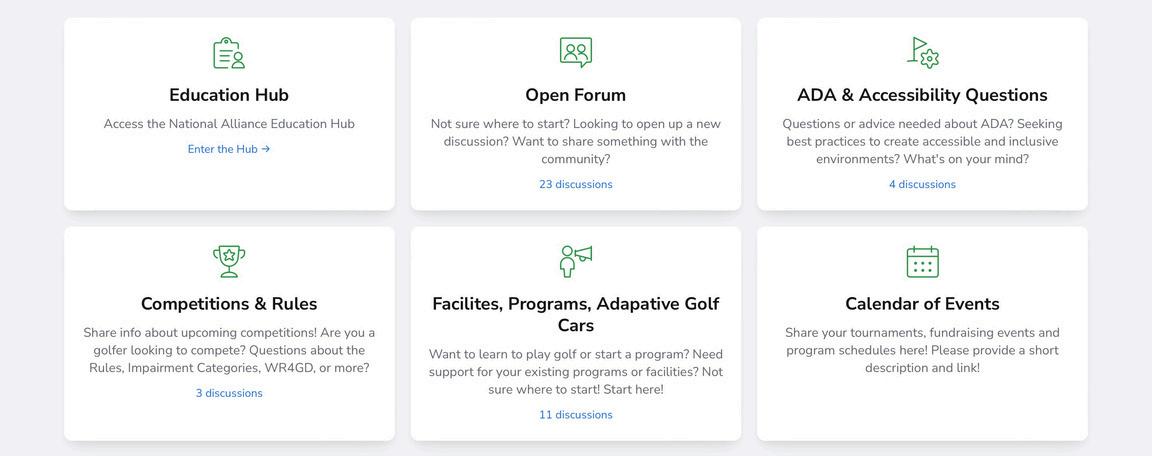
JOINTHECOMMUNITY. JOINTHECONVERSATION.
“GAIN is not simply a community networking platform, it is the top national resource and education center for the golf industry related to ADA compliance, education, and the game. Existing programs are growing and new ones are developing. But, can we say that golf facilities around the country are universally prepared? No … we can’t say that. ”
Dave Barton, PGA Alliance Executive Director

GAINSPOTLIGHT: ACOMMUNITYFORALL
A networking platform and resource center for golfers, adaptive golf leaders, and anyone who believes golf is a game for everyone.
Where can you easily find a growing resource of nearly 500 people who have experience starting and running adaptive golf programs, golfers of all abilities who understand how difficult it may seem sometimes to get started, and experts and supporters across the country who welcome the opportunity to advise and collaborate?
GAIN - the Golf Access and Inclusion Network® , that’s where
Through this free resource provided by the National Alliance, users can seek or provide advice, download usable resources such as policy templates and specific guidance related to the ADA and adaptive golf, and connect to the Alliance Education Hub
We invite you to join the growing GAIN community and we look forward to what you may learn, what you may share, and how we can all work together to bring more people of all ages and backgrounds into the great game of golf.
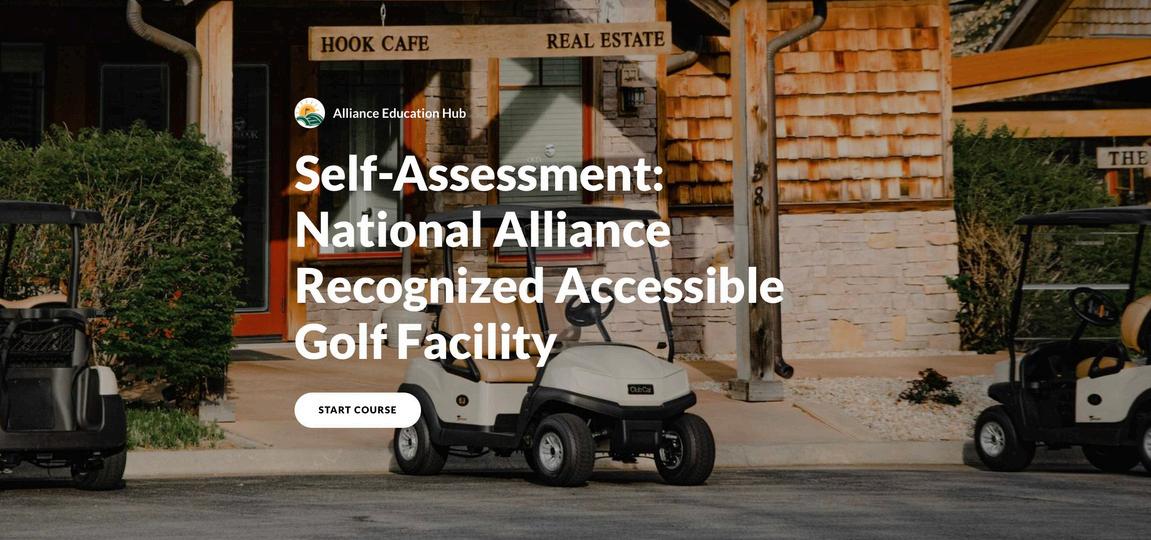
EDUCATION HUB SPOTLIGHT: SELF-ASSESSMENT PROCESS
How do you know your golf course is accessible per the Americans with Disabilities Act? Simple…make some time to find out.
If your golf facility truly prides itself on welcoming golfers of all abilities and you have not yet conducted a selfassessment to confirm you are providing a barrier free environment, your surrounding community is waiting, or going somewhere else to play golf
Show your neighbors that you welcome everyone into the game of golf by accessing the Alliance Education Hub and completing a Self-Assessment and demonstrating your commitment to access and inclusion in the game of golf.
Is your course barrier free? Is your staff training to communicate and work with individuals with disabilities? Is your website ADA and WCAG compliant such that your customers with disabilities can understand what you offer? Do you have policies that are easy for customers to find that may need additional access or equipment to play the game?
Earn your credential as a Recognized Accessible Golf Facility through the National Alliance Education Hub
Then you’ll know, and so will your future customers.

318
Enrolled Learners
Course Completions
Training Hours Completed 234
The Alliance Education Hub is a FREE service available to anyone in the golf industry.


4THU.S.ADAPTIVEOPENFIELDSET; DELOITTEEXPANDSSUPPORT
By Jonathan Coe, USGA
| Jun 16, 2025 | Liberty
The USGA today announced the field for the 4th U.S. Adaptive Open Championship, to be played at Woodmont Country Club, in Rockville, Md., from July 7-9.
Deloitte* , the official professional services sponsor of the USGA, will provide financial support in the form of travel-related expense reimbursements to each of this year’s 96 competitors. Additionally, for the first time in championship history, the final round of the U.S. Adaptive Open will be broadcast live on the Golf Channel, made possible through Deloitte’s expanded support
“It’s hard not to leave the U.S. Adaptive Open feeling inspired. These athletes remind us that talent knows no limits, ” said Scott Mager, US Chief Marketing Officer at Deloitte “It’s a powerful moment for golf, and Deloitte is proud to be part of this championship This isn’t just about sport -- it’s about what’s possible ”
Corner, N.J.
Photo: Max Togisala is among the 96 competitors set to tee it up in this year's U S Adaptive Open at Woodmont C C (USGA/Kathryn Riley)
The USGA and Deloitte first teamed up in 2014 to elevate the game through strategy, innovation, and fan engagement In 2016, they announced their first multiyear professional-services sponsorship, marking a new era of collaboration. Since then, Deloitte has deepened its relationship with the USGA by providing strategic advisement across many aspects of the USGA’s business and developing the USGA App an all-in-one destination that offers fans an immersive, intuitive, and visually engaging experience.
“We’re incredibly thankful to Deloitte for their support of this year’s U S Adaptive Open Championship, ” said John Bodenhamer, USGA Chief Championships Officer “Our competitors will benefit from not only alleviated
financial pressures but also increased exposure for this inspiring national championship ”
Furthermore, the field for the 4th U.S. Adaptive Open has been set.
The USGA received 260 entries for the 2025 U S Adaptive Open, and for the second year, 18-hole qualifiers were conducted by Allied Golf Associations (AGAs) at eight sites across the country. The 96-player field includes competitors from 34 states and 10 countries. The championship’s youngest competitor is 16-year-old Ryder Barr of Celina, Texas, and Dennis Walters, of Jupiter, Fla , is the championship's oldest player at 75 years old Of the 96 players in the field, 74 previously played in one or more of the past iterations of the USGA’s newest championship. 22 will be making their championship debut.
The low overall female scorer and low overall male scorer from each qualifying site earned a spot in the championship The remaining qualifying spots were determined by Impairment Category and gender across all eight qualifying sites using an adjusted Score Differential. In total, 66 players earned their place in the field through qualifying Another 20 were fully exempt, and others were added to the field as committee selections
The championship is open to both male and female professional and amateur golfers with a World Handicap System™ Handicap Index of 36.4 or less and an eligible impairment confirmed by a WR4GD Pass The impairment categories are as follows:
Intellectual Impairment
Lower Limb Impairment
Multiple Limb Amputee

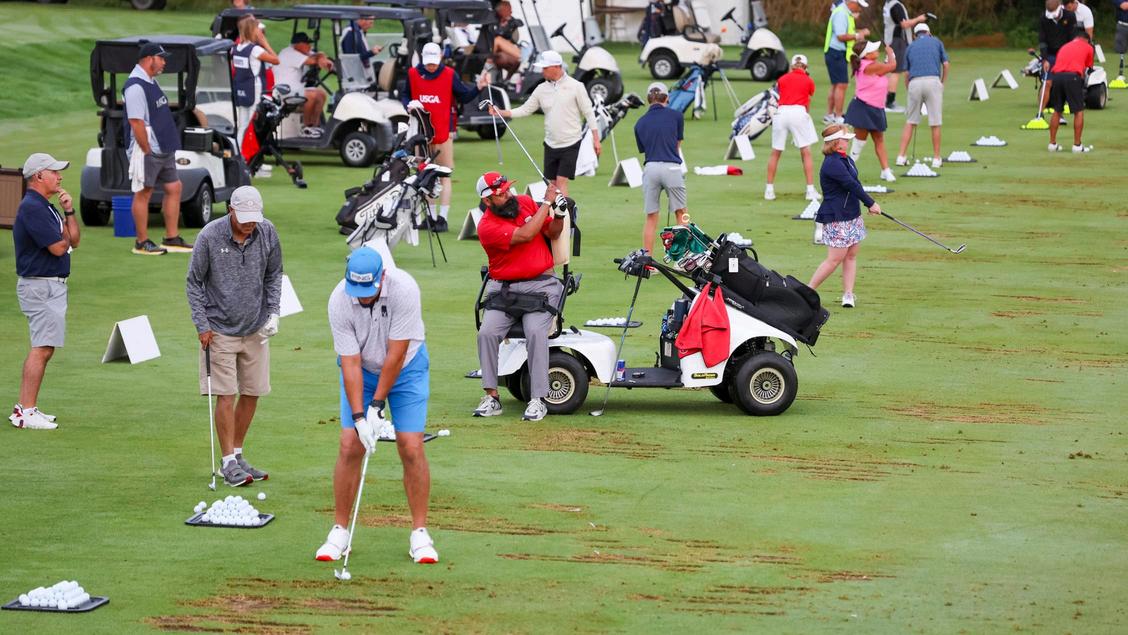
Coordination Impairment (previously Neurological Impairment)
Seated Players
Short Stature
Upper Limb Impairment
Vision Impairment
The championship will be contested over 54 stroke play, with a cut after 36 holes Multipl tees will be utilized Carts are permitted for al and caddies. The 96-player field is as follows:
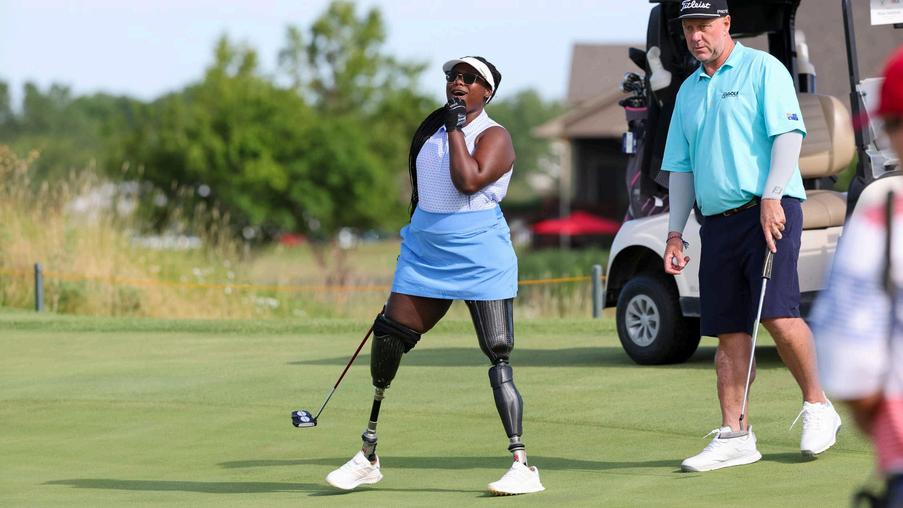
FIELD:4THU.S.ADAPTIVEOPENCHAMPIONSHIP
Russell Aide, of Canada, 18, Upper Limb Impairment, Qualifier
Carter Arey, of Columbia, Mo , 35, Lower Limb Impairment, Qualifier Medalist
Andrew Austen, of Radnor, Pa., 27, Upper Limb Impairment, Qualifier
Ryder Barr, of Celina, Texas, 16, Upper Limb Impairment, Qualifier
Jake Beausir, of Tarpon Springs, Fla., 27, Vision Impairment, Qualifier
Chris Biggins, of Birmingham, Ala , 33, Coordination Impairment, Exempt
Vince Biser, of Towson, Md , 37, Coordination Impairment, Committee Selection
Bailey Bish, of Tucson, Ariz , 25, Coordination Impairment, Exempt
Justin Blaze, of Glencoe, Ky., 47, Seated Players, Qualifier
Amy Bockerstette, of Phoenix, Ariz., 26, Intellectual Impairment, Qualifier
Jack Bonifant, of Sandy Spring, Md., 35, Coordination Impairment, Qualifier Medalist
Kenny Bontz, of Bradenton, Fla., 55, Lower Limb Impairment, Qualifier
Albert Bowker, of Buellton, Calif , 28, Short Stature, Qualifier
Andreas Brandenberger, of San Diego, Calif , 38, Multiple Limb Amputee, Qualifier
Grace Anne Braxton, of Fredericksburg, Va , 53, Intellectual Impairment, Committee Selection
Austin Brown, of Richland, Wash., 28, Lower Limb Impairment, Qualifier Medalist
Mike Browne, of England, 47, Lower Limb Impairment, Exempt
Joakim Bjorkman, of Sweden, 34, Short Stature, Committee Selection
Brandon Canesi, of Northfield, N J , 33, Multiple Limb Amputee, Qualifier
Tyler Cashman, of Oldwick, N J , 22, Vision Impairment, Committee Selection
Larry Celano, of Chandler, Ariz , 56, Seated Players, Committee Selection
Wellman Kody Conover, of Las Vegas, Nev , 30, Intellectual Impairment, Qualifier
Amanda Cunha, of Kaneohe, Hawaii, 21, Vision Impairment, Exempt
Ryan Cutter, of Helena, Mont., 34, Multiple Limb Amputee, Qualifier
Abigail Davis, of Houston, Texas, 23, Upper Limb Impairment, Qualifier
David de Garavilla, of Telford, Pa , 42, Lower Limb Impairment, Qualifier
Justin Delp, of Owasso, Okla , 44, Coordination Impairment, Qualifier
Mario Dino, of Denver, Colo , 22, Coordination Impairment, Qualifier
Thomas Duffy, of Utica, Ill., 26, Seated Players, Committee Selection
Meredith Dwyer, of Paramus, N.J., 30, Lower Limb Impairment, Qualifier Medalist
Aimee Eckert, of Clarksville, Ohio, 38, Lower Limb Impairment, Qualifier
Jesse Florkowski, of Canada, 35, Upper Limb Impairment, Qualifier Medalist
Jarrett Fultz, of Queen Creek, Ariz , 24, Coordination Impairment, Qualifier
Kenny Gentile, of Angola, Ind , 68, Vision Impairment, Qualifier
Anton Glass, of Naples, Fla , 29, Lower Limb Impairment, Qualifier Medalist
Kenny Green, of Smyrna, Tenn., 43, Lower Limb Impairment, Qualifier
Harley Hartle, of Pittsburgh, Pa., 27, Upper Limb Impairment, Qualifier
Jason Hasty, of Chester, Va., 42, Upper Limb Impairment, Qualifier
Dogyoung Heo, of Republic of Korea, 16, Intellectual Impairment, Qualifier
Kirk Holmberg, of Hutchinson, Kan , 57, Coordination Impairment, Qualifier
Sophia Howard, of Hudsonville, Mich , 18, Upper Limb Impairment, Qualifier Medalist
Jacob Huber, of Bismarck, N.D., 28, Multiple Limb Amputee, Qualifier
Benjamin Hulin, of Salt Lake City, Utah, 43, Seated Players, Qualifier
Josh Hunke, of Canada, 40, Upper Limb Impairment, Qualifier Medalist
Ryanne Jackson, of St. Petersburg, Fla., 27, Coordination Impairment, Exempt
William Jacobsen, of Auburn, Ala , 21, Intellectual Impairment, Qualifier Medalist
Andrew Johnson, of Whitmire, S C , 25, Intellectual Impairment, Qualifier
Kiefer Jones, of Canada, 35, Vision Impairment, Exempt
Sunyoung Kim, of Republic of Korea, 24, Intellectual Impairment, Qualifier Medalist
Zdenka Kitagawa, of Alpharetta, Ga , 62, Upper Limb Impairment, Qualifier Medalist
Nick Kimmel, of Fallbrook, Calif , 35, Multiple Limb Amputee, Committee Selection
Kelsey Koch, of Grand Blanc, Mich , 32, Lower Limb Impairment, Qualifier
Brendan Lawlor, of Ireland, 28, Short Stature, Exempt
Cynthia Lawrence, of Lehigh Acres, Fla., 62, Multiple Limb Amputee, I.C. Minimum
Nancy Lee, of New York, N.Y., 58, Lower Limb Impairment, Qualifier Medalist
Simon Lee, of Republic of Korea, 27, Intellectual Impairment, Exempt
Brock Leitner, of Canada, 27, Seated Players, Qualifier
Ryan Lukkari, of West Bloomfield, Mich , 39, Upper Limb Impairment, Qualifier
Anthony Maldonado, of Odessa, Texas, 23, Lower Limb Impairment, Qualifier
Ford Martin, of Potomac, Md., 32, Coordination Impairment, Exempt
James Moceri, of Rochester Hills, Mich., 36, Seated Players, Qualifier
Kim Moore, of Battle Creek, Mich., 44, Lower Limb Impairment, Exempt
Issa Nlareb, of France, 34, Multiple Limb Amputee, Exempt
Chris Oviatt, of Milwaukie, Ore , 61, Coordination Impairment, Qualifying Minimum
William Pease, of Saint Augustine, Fla , 61, Vision Impairment, Qualifier
Chad Pfeifer, of Caldwell, Idaho, 43, Lower Limb Impairment, Exempt
Kipp Popert, of England, 26, Coordination Impairment, Exempt
Victor Postillion, of Winfield, Ill., 37, Lower Limb Impairment, Qualifier
Tracy Ramin, of Montrose, Mich , 53, Lower Limb Impairment, Qualifier
Ricky Reilly, of Syracuse, N Y , 24, Short Stature, Qualifier Medalist
Blake Ryan, of Hebron, Ky , 48, Lower Limb Impairment, Qualifier
Mandi Sedlak, of Kearney, Neb , 45, Lower Limb Impairment, Qualifier Medalist
Cassie Sengul, of Manassas, Va., 19, Coordination Impairment, Exempt
Douglas Shirakura, of Somers, N.Y., 22, Lower Limb Impairment, Qualifier
Brad Smith, of England, 30, Lower Limb Impairment, Committee Selection
Deborah Smith, of Rockford, Ill , 63, Lower Limb Impairment, Qualifier
Garrett Smyth, of Raleigh, N C , 55, Lower Limb Impairment, Qualifier
Natasha Stasiuk, of Canada, 26, Intellectual Impairment, Exempt
Joshua Stephenson, of Woodstock, Ga., 23, Intellectual Impairment, Qualifier
Jordan Thomas, of Nashville, Tenn., 36, Multiple Limb Amputee, Qualifier
Dawson Thompson, of Pascagoula, Miss., 23, Short Stature, Qualifier
Max Togisala, of Clearfield, Utah, 21, Seated Players, Exempt
Mariano Tubio, of Argentina, 45, Seated Players, Committee Selection
Kellie Valentine, of McKean, Pa , 54, Upper Limb Impairment, Qualifier
James Van Noord, of Bloomfield Hills, Mich , 32, Coordination Impairment, Qualifier
Justin VanLanduit, of Chaska, Minn., 45, Coordination Impairment, Qualifier
Rose Veldman, of Los Angeles, Calif., 25, Multiple Limb Amputee, Exempt
Eli Villanueva, of Fayetteville, N.C., 58, Upper Limb Impairment, Qualifier
Cathy Walch, of Buford, Ga , 59, Upper Limb Impairment, Exempt
Robert Walden, of Mesa, Ariz , 53, Upper Limb Impairment, Qualifier
Dennis Walters, of Jupiter, Fla , 75, Seated Players, Qualifier
David Watts, of South Africa, 37, Lower Limb Impairment, Committee Selection
Chris Willis, of Canada, 44, Upper Limb Impairment, Exempt
Daniel Wiseman, of Haslett, Mich., 36, Lower Limb Impairment, Qualifier
Lachlan Wood, of Australia, 34, Lower Limb Impairment, Exempt
Peyton Zins, of Indianapolis, Ind , 23, Coordination Impairment, Qualifier
ALABAMACHAMPION:ONE-ARMEDGOLFPRO ALEXFOURIEAIMSFORCHANGEWITH ADAPTIVEGOLFTOUR
by Brenda Ladun | June 6th, 2025
| abc3340.com
Alex Fourie, known as "The One Armed Golfer" on social media, has overcome significant challenges to become a golf professional and advocate for adaptive golf. Born in Ukraine with a cleft palate and one arm, Fourie attributes his disabilities to the radiation effects of the Chernobyl disaster He spent his early years in a Ukrainian orphanage, where survival was a daily struggle "I feel saved out of orphanage, I feel saved out of Ukraine, I feel saved by golf, " Fourie said. "The Soviet mindset is if you're handicapped, you're useless "
Adopted by missionaries just before turning 7, Fourie was introduced to sports by his father, an avid athlete "Growing up, I had a dad that's absolutely amazing and he played 12 different sports in college, " Fourie said. "He wanted the same thing for me, and so I played tennis and basketball, soccer and golf, football and cross country. "
While he excelled in various sports, golf became his passion "I really believe golf is a place, not just a sport, but a place where people can be themselves and also find themselves, " he said. "No disability is a disability to grow and to learn and to really love the game of golf "
Now the head pro at the 500 Club in North Carolina, Fourie is the first disabled golf pro in America He is dedicated to creating an inclusive environment for golfers with disabilities and runs a non-profit, Single Hand Golf, to promote adaptive golf
"It's giving back, and golf has given me so much, " Fourie said "I want people to experience what the game of golf can do for them "
Fourie is close to being a scratch golfer and hopes to inspire others "I think they know how hard the

game of golf is, and they look at me and say how can you do this so well... and I hope I'm motivation for them, " he said.
Fourie is working to launch an adaptive golf tour, aiming to provide opportunities for talented golfers with disabilities. "It would be huge and lifechanging for golfers who do have disabilities but are really good at golf, " he said.
For Fourie, golf is a metaphor for life "Golf is a journey just like life and you'll never perfect it just like life... but you can always try and, if you put your mind to it... and practice and get help... you can always get better, " he said "That's the beautiful part of the game of golf It's the closest thing to life. "
Click on the video linked above to watch Alex’s full segment with ABC3340.
ST.ANDREWSLINKSTRUSTLAUNCHES DISABILITYGOLFPROGRAMME
Reposted
St Andrews Links Trust has announced the launch of a new Disability Golf Programme that is set to be introduced at the Home of Golf this summer
Disability coaching sessions will be hosted at the St Andrews Links Golf Academy and will be available to anyone with a physical, sensory or learning disability, regardless of background or ability
The sessions, delivered in an 8-week block from JulyAugust, will cost £10 per session, per person, and will provide a fun, safe, and inclusive environment where participants can learn the fundamentals of the game or develop their existing skills
This programme follows the success of disability golf taster sessions that the Trust hosted in March and April as part of Scottish Golf’s Community Disability Hub Programme.

David Watt, Head of Golf Academy at St Andrews Links, said: “We are delighted to be launching the Disability Golf Programme and hope that it will support golfers that live with a disability, whether they are complete beginners or looking to improve on existing experience
“The feedback we received following the disability taster sessions earlier this year was overwhelmingly positive, and this highlighted the benefit that an ongoing, tailoredprogramme here at the Home of Golf would bring to the disabled golf community We are excited for the sessions to kick off this summer and are happy to be taking another step towards a more accessible future for golf in Scotland ”
Sessions will focus on all key aspects of the game and will be delivered by experienced St Andrews Links Golf Academy instructors in a supportive and encouraging setting Players will be grouped by experience level to enable everyone to get the most out of the lessons.
Those interested in participating can register via the St Andrews Links website, after which a member of the Golf Academy team will follow up with booking confirmation and payment details
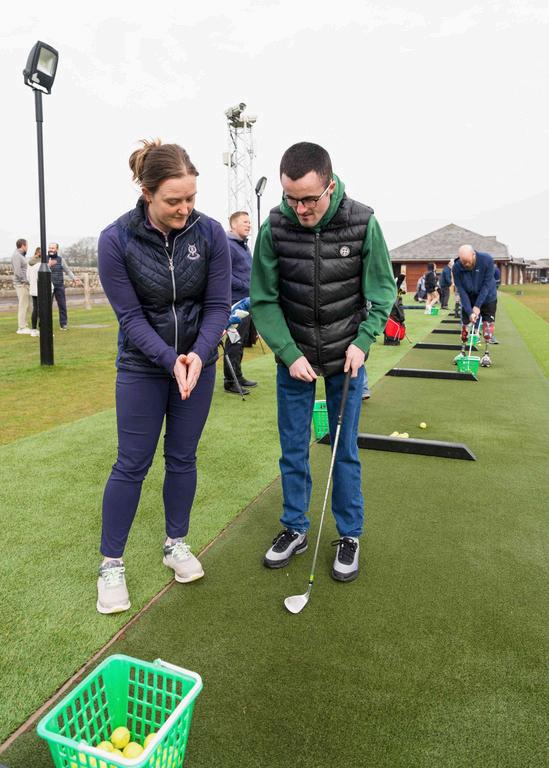
Disability Golf taster sessions were held at St Andrews in March and April

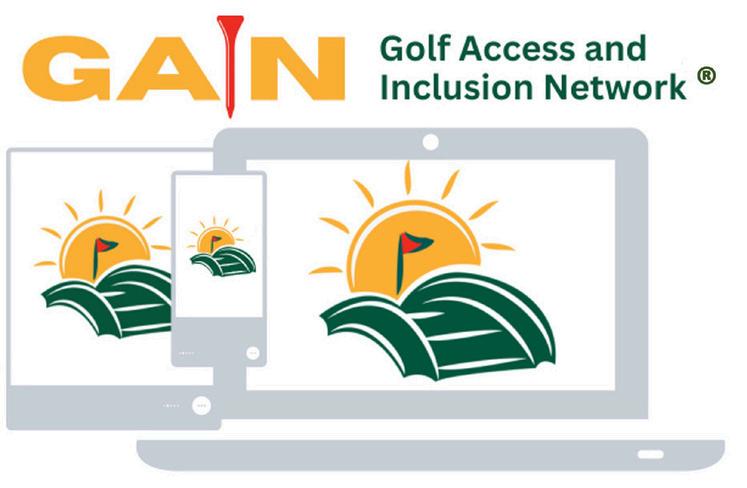
GAIN is your community ... a free networking forum to foster better access to adaptive golf experts across the country and resources to serve the community of golfers with disabilities and those that lead and support these efforts.
All are welcomed on GAIN ... those seeking information about adaptive golf, the ADA and more with those that can provide the answers.
ADA & Accessibility
Competition & Rules
Facilities, Programs, Adaptive Golf Cars
Calendar of Events
Open Forums


